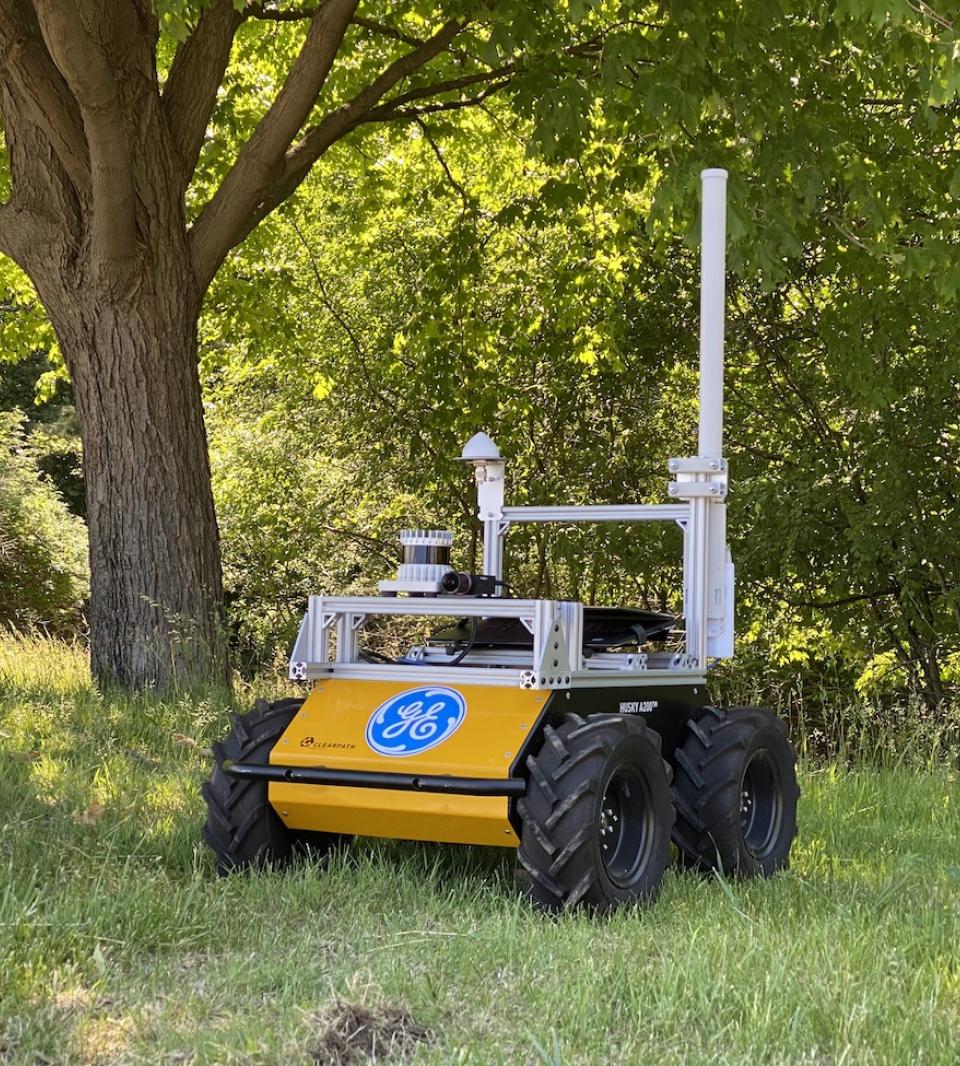- GE Aerospace Research’s Robotics Team Demonstrates “Sensiworm” for future On-Wing jet engine inspection and repair
- Untethered soft robotics, electronic skin-innervated platform resembles an inchworm that moves easily through the crevasses and curves of jet engine parts to detect part defects or corrosion, and can even measure the thickness of thermal barrier coatings
- Sensiworm robots could greatly expand the eyes, ears, and inspection capabilities of human service operators and enable more on-wing inspections with less maintenance burden
Moving deep inside the bowels of a jet engine — negotiating baroque curves and tricky surfaces — GE Aerospace Research’s new Sensiworm looks less like a complex triumph of engineering than something eerily close to a living organism. This is not a coincidence.
Six to ten feet below the ground, 12-inch pipes carry natural gas all over America. They wind around electrical conduits and water mains. They bear the weight of daily commutes, delivery trucks, and city buses. And a lot of them are leaking. “Some of these pipes have been in the ground for over 100 years, and they’re only getting older,” says Alexander Duncan, a roboticist at GE Research. “Nobody really thought through how to service them. So it’s now a massive and costly problem for the national infrastructure.”
Some of us might feel like we spent the past two years living under a rock. GE researcher Deepak Trivedi has been working there.
- Innovative, autonomous soft robot design adapted from the giant earthworm tunneling robot developed as part of the Defense Advanced Research Agency’s (DARPA) Underminer Program
- GE’s Pipe-worm (Programmable Worm for Irregular Pipeline Exploration) adds cockroach-like whiskers to its powerful fluid powered muscles to give it extreme flexibility and perception capabilities
- Ideal for autonomous monitoring, inspection, repair and even mapping of oil and gas pipelines or underground municipal water and sewer systems.
For media inquiries, please contact:
Todd AlhartDirector, Innovation Communications
GE Aerospace
+1 518 338 5880
[email protected]
business unit
tags
A curious creature crawls steadily through the underbrush in a remote forest. It’s not a badger or bobcat but an autonomous vehicle (AV), an unmanned four-wheeled contraption that looks a bit like a miniature moon buggy. Then the movement halts suddenly, as if the AV has paused for thought. Hidden in the foliage is an impassable obstacle: a fallen oak tree. After a couple of minutes of recalibration, the AV skirts the massive trunk and pushes on.
- GE’s prototype ground vehicle successfully navigates on its own through unstructured environments, including forests and heavily wooded areas at its research campus in Niskayuna
- Army researchers have successfully tested this approach at their test facility in Maryland
- GE’s autonomous system integrates its novel Humble AI technology, which enabled the ground vehicle to determine certain vs.
For media inquiries, please contact:
Todd AlhartDirector, Innovation Communications
GE Aerospace
+1 518 338 5880
[email protected]
business unit
tags
With the suppleness of a gymnast and the strength of a football player, a robot in the shape of a giant earthworm recently slithered through and around dirt, small rocks and tree roots. The tunnel it dug was comparable to the typical trenchless methods used today, but the journey marked a significant milestone for the prototype: It demonstrated the feasibility of using a so-called soft robot to burrow autonomously through tough terrain quickly and without breakdowns.
- Autonomously tunnels and navigates around small rocks and other obstacles underground at a distance comparable with commercially available trenchless technologies
- GE Robot’s ability to function reliably in extreme, rugged environments a first in soft robotic design
- Demonstration a significant milestone through the DARPA Underminer program to advance tunneling technologies in support of military operations
NISKAYUNA, NY – July 8, 2021 – Neither the
For media inquiries, please contact:
Todd AlhartDirector, Innovation Communications
GE Aerospace
+1 518 338 5880
[email protected]
business unit
tags
- Awarded two projects totaling $36 million to modernize DoD warehouses using smart 5G-enabled technologies at two military bases that support real-time planning and deployment of resources and supplies for critical missions
- Would reduce major operations planning from several weeks to less than 24 hours push toward “just-in-time” inventory planning scenarios
- Projects will involve digital twin technology, autonomous robots and real-time tracking of thousands of assets and components, utilizing the power
For media inquiries, please contact:
Todd Alhart
Director, Innovation Communications
GE Aerospace
+1 518 338 5880
[email protected]
business unit
tags









